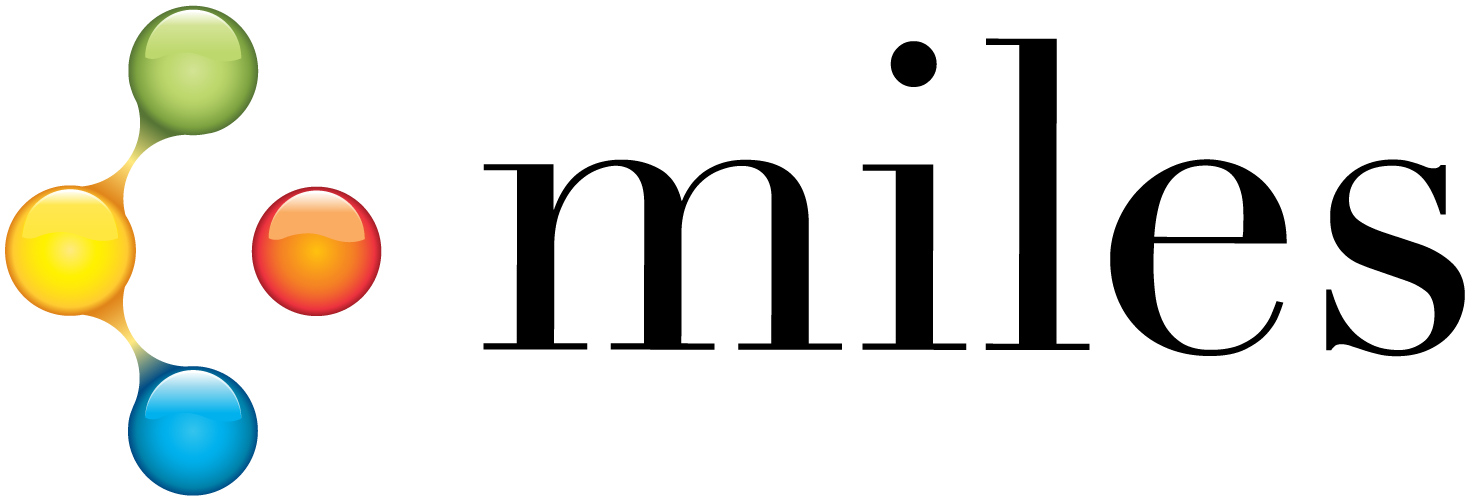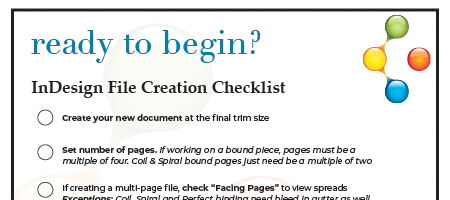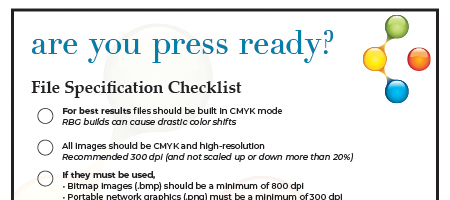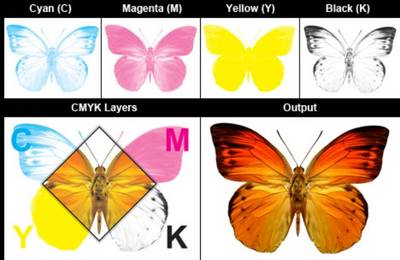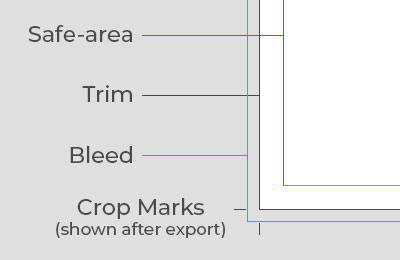
Resource Center
Checklists, Guides, and FAQs
With a century of industry insight and experience, Miles Printing has experts specializing in all areas of print and brand communications. Offering a full range of print, finishing and fulfillment capabilities we have the knowledge to get any job done.
Life of a Print Piece
Miles Printing can help you from conception to distribution and answer all your questions along the way.
Plan
Determine Goal
Identify Audience
Establish Timeline
Develop
Research
Develop Concept
Layout & Design
Variable Data
Revisions & Approvals
File Prep
Produce
Commercial Printing
On-Demand Printing
Signage & Display
Packaging
Bindery & Die-Cutting
Use
Kitting
Full-Service Mailing
Inventory
Global Fulfillment
Did You Know Miles has a Creative Services Team?
Get a Design Quote Today!
Checklists
Ensure your files are built properly and your print-ready files are optimized.
Don't See the Die Line You Need?
Request a Die Line
FAQs
Frequently Asked Questions
CMYK stands for Cyan, Magenta, Yellow, and black. The black is referred to as K denoting key, a shorthand for the printing term key plate. These are the four ink colors most commercial printing presses use to create all the other colors. If you have a “full color” image, your printer will print with CMYK inks to reproduce the image.
RGB stands for Red, Green, and Blue. These are the 3 colors that are used in electronic media (like TV’s and computer monitors) to create all the other colors.
If you supply your print files with colors created from RGB, your print shop will have to convert these files to CMYK. Sounds simple right? And it can be, but other times it can create problems (not to mention an additional charge to convert your files). Converting files from RGB to CMYK can cause the colors to shift in an undesired manner. It can even cause your images to get fuzzy or pixelated.
If all you have are RGB images, it is best for you to convert them yourself (this is easily done in Photoshop with just a click of a button). This will not only save you money on prepress / file charges, but you will also be able to see what the final converted image looks like and can manipulate it further if needed.
PRINTING LINGO
- 4/4 pronounced “four over four”; Four ink colors applied to the front of the piece and four ink colors applied to the back – usually the 4 colors are CMYK
- 4/1 pronounced “four over one”; One side of the printed piece has the four ink colors applied to it but the other side only receives one ink color
- 4/0 pronounced “four over zero”; One side of the printed piece has the four color ink applied to it and the other side has no ink (blank)
In today’s printing, absolutely yes! With UV inks, Miles often prints white ink on clear substrate like plastic or a dark background such as black paper.
If you have questions about what types of UV inks or color technologies will work best to showcase your printing project, ask your Miles Printing rep for suggestions. We’ll find the best solution for your needs.
The printing process is almost exactly the same for both conventional and UV printing; the difference comes in the inks and the drying process associated with those inks.
Conventional offset printing uses solvent inks – which are not the greenest option – because they evaporate into the air, releasing volatile organic compounds (VOCs). They often require additional spray powders to aid in drying. The inks are absorbed into the paper and colors can often become diluted and less bright especially when printing on an uncoated stock. Depending on the papers character and weight, drying can add days to each job. Conventional inks must be absorbed by the substrate they are printed on therefore, you can not use them on materials like plastic, foil, or acrylics.
- Dry over time and with the aid of spray powders
- Release VOC (volatile organic compounds) after they are printed
- Inks absorb into substrate making colors muted
- Stocks are limited to mostly paper
- Inks can rub, smudge, and offset
UV inks dry through a photo mechanical process. The inks are exposed to ultra-violet lights as they are printed, immediately turning from a liquid to a solid with very little evaporation of solvents and almost no absorption of the ink into the paper stock. So you can print on virtually whatever you want when using UV inks! Since they dry immediately and release no VOCs into the environment, UV printing is considered a green technology, safe for the environment and leaving an almost zero carbon footprint. Of course, because UV inks dry on contact, they never smudge. And that means, no matter what type of paper you use, you will never need to add costly coatings to protect against smears and rub-offs.
- Dry immediately by UV lights before they leave the printing press
- Release NO VOC's as they are cured immediately
- Ink sits on top of the substrate giving brighter colors
- Can print on a wide range of stocks including paper, plastic, foil, wood, etc.
- Inks are very durable and will not rub, smudge, or offset
At Miles Printing, we are proud to say that we print UV inks on our commercial presses, digital presses, and signage pressroom.
A general rule of thumb is if a 2-page form prints with a quantity of 7500 or less, it will print most economically on our digital press.
Options for printing your project are virtually limitless. Your sales executive and customer service representative will always work with you on gaining the most efficiencies and economical solutions for printing your project.
Trim size represents the final dimensions of your printed piece. However, artwork and photographs must extend beyond the trim size (see “bleed” below) to avoid narrow slivers of white at the edge of your piece once it is cut to size.
Safe-area is an area inside the trim and is important to pay attention to because this is where you should place your most important information within your design. Any content outside of this area is in risk of being cut off!
The safe area can also account for the gutter, or middle, of the publication and how easy it will be to see content in the center of a magazine spread. Safe area on many print ads can be as little as .125” or as large as 1”. If your advertisement is going to be a poster that will also be displayed within a metal frame, the safe area might be even larger to accommodate for the overlap from the lip of the frame.
Bleed is the portion of your design that extends past the trim size. Bleed is cut off when the publication is trimmed to the final size. Its sole purpose is to make sure your design or image reaches the very edge without leaving any unsightly white edges. We recommend 0.125" (1/8 inch)–0.5” (1/2 inch) larger than the trim size but it really depends on the size of the piece and how it will be trimmed.
Understand Paper Ratings
Paper stocks are distinguished by two main factors: weight and brightness. A paper’s weight is expressed in pounds, calculated by weighing a stack of 500 sheets of the paper at its basic sheet size. For example, a ream of common photocopier paper from your office is rated at around 22#.
Paper’s brightness is measured on a the Tappi scale in the USA, where papers are rated from 0 to 100 based on how much light is reflected from specially-calibrated bulb. While a paper’s weight is responsible for the feel of the paper in your hand, its durability and what some call “professional” appearance, the paper’s brightness will impact readability, contrast and the “trueness” of colors.
Other terms used to describe paper can include:
- Calendering – this is how smooth a paper appears.
- Opacity – this can affect the perceived quality of a finished document, and determines whether text from the front might “show through” on the back of the page.
- Coating – this refers to a number of additives that are literally printed over the top of the paper sheet during the finishing process to achieve various qualities. Generally coatings are used to achieve smooth, silky finishes that provide a more vibrant, glossy appearance by keeping ink on the surface of the sheet rather than allowing it to absorb into the paper.
Plan Ahead and Make an Informed Choice
As with all projects, getting the best result from your print work requires proper planning, so consider the finished project before committing to a paper stock at the start. If you think last year’s brochure is a bit flimsy, you’ll want a heaver weight stock for this year. Similarly, if this year’s fliers are a larger size than last year’s, you might choose to use a lighter paper. If your company feels strongly that recycled products are the way to go, state this when you write your print proposal – recycled sheets aren’t necessarily darker, flimsier, or more expensive anymore.
Don’t be Afraid to Ask
A good commercial printing rep will guide you toward the best paper stock choices for a given job. Our top questions to keep in the back of your mind and bring up when reviewing your quotes are:
- Can I get a sample sheet?
- This allows you can see how the paper looks when used for a job similar to yours.
- Do you have a house stock book?
- This is a collection of paper swatches usually available at preferential rates because the printer buys these stocks in greater quantities. House stock papers are usually high-quality sheets that are easy to work with and produce great results.
- Can we add coating to achieve the same result?
- Sometimes the most cost-effective way to achieve the look and feel of a brochure you want to emulate isn’t by overspending to get the fancy paper they used – it’s simply by adding a finish to the end of your printing process.
Our team of experts is ready to help you maximize the impact of your next commercial printing project through effective paper choice, contact us today to discuss your requirements.
There are a few VERY common envelopes such as a #10 (the standard business letterhead envelope) and a #9 (the standard reply envelope that comes with all of your bills) and then there are tons of other "standard" sizes such as A2, A7, 4-Bar, #6 3/4 and so on.
A-envelopes are typically used for more formal communications such as invitations. They are made from thicker paper stock and usually come in a wider variety of colors and finished than some of the other envelope sizes. Most A-envelopes also have side seams (the back of the envelope is put together with two vertical glue seams as opposed to three triangular flaps) which give a more finished look to the envelope.
A-Envelope Sizes (inches):
- A1 Envelope - 3 5/8 x 5 1/8
- A2 Envelope - 4 3/8 x 5 3/4
- A6 Envelope - 4 3/4 x 6 1/2
- A7 Envelope - 5 1/4 x 7 1/4
- A8 Envelope - 5 1/2 x 8 1/8
- A9 Envelope - 5 3/4 x 8 3/4
- A10 Envelope - 6 x 9 1/2
A-Envelope Insert Sizes (inches):
- A1 Envelopes fit 3 1/2 x 4 7/8 inserts
- A2 Envelopes fit 4 1/4 x 5 1/2 inserts
- A6 Envelopes fit 4 1/2 x 6 1/4 inserts
- A7 Envelopes fit 5 1/8 x 7 inserts
- A8 Envelopes fit 5 3/8 x 7 7/8 inserts
- A9 Envelopes fit 5 1/2 x 8 1/2 inserts
- A10 Envelopes fit 5 3/4 x 9 1/4 inserts
Business envelopes are solid with no window, and a basic flap on the back. Some have special features for additional security or pre-moistened adhesive these days.
Business Envelope Sizes (inches):
- #3 (2 1/8 x 3 5/8)
- #6 1/4 (3 1/2 x 6)
- #6 3/4 (3 5/8 x 8 5/8)
- #7 (3 7/8 x 7 1/2
- #9 (3 7/8 x 8 7/8)
- #10 (4 1/8 x 9 1/2
- #11 (4 1/2 x 1- 3/8)
- #12 (4 3/4 x 11)
- #14 (5 x 11 1/2)
These envelopes are commonly used for invoices, checks, letters and other business documents.
Case (Section Sewn) binding is used for high-quality, hardcover books. Case binding involves stitching the document’s sections together, then applying a layer of adhesive and clamping a hard cover over the lot. Case binding allows for a printed spine. Use case binding for textbooks, reference books, and documentation of a historic nature.
Perfect binding is commonly used for books and magazines, perfect binding involves gathering the signatures of a document, applying glue to one edge and sticking the cover around the entire booklet. Perfect binding is tidy and precise, but less useful for archival than a case binding. Perfect binding machinery has minimum thickness tolerances – around 100 pages are necessary for a perfect-bound document. Perfect binding allows designers to include the spine with cover artwork, making documents easily identifiable on a shelf. Use perfect binding for annual reports, magazines, and user manuals.
Post binding usually involves a hardcover front and back with two or three posts punched through the edge. The advantage of post binding is that documents can be easily taken apart to replace pages. Unlike comb-bound documents, a publication with a post-style binding can still have a printed spine. Use posts for albums, professional papers, and presentations.
Saddle Stitch Generally publications under 90 pages are suitable for saddle-stitch binding. This involves folding larger sheets in half and stapling through the spine. Most saddle-stitch machines can handle around 200 sheets. It's best for magazines, soft-cover books, and pamphlets.
Spiral / Plastic coil binding A series of holes are punched through documents, then a coil of plastic is threaded through the holes. This binding allows documents to lie flat and fold over, and is suitable for booklets from ¼" to 2" thick. Spiral bindings can’t be used to display titles. Also, the bindings can be damaged, compromising the readability of the document over time. Use spirals for presentations, notebooks, and calendars.
Wire-o (double-wire) binding Pairs of wires are placed into pre-drilled holes at the edge of the document. This creates a booklet that will lie flat and can be folded over on itself. There is some scope to print on the spine of a wire-o bound document, but placement of the wire combs compromises legibility and it is generally not advised. Choose wire-o binding for reports and technical manuals.
Variable data printing (VDP) is a flexible, cost-saving printing tool. When used with digital printing, elements such as text, graphics and images can be changed from one printed piece to the next using information from a database.
VDP can be as basic or as complex as you need it to be. Say you want to send out personalized letters, invoices or a direct mail campaign series. Using just one basic layout, you can adapt one printed piece at a time, increasing the odds of consumer response by individually targeting your mailing.
With variable data printing, rather than delivering a single message to 10,000 customers, you can print 10,000 unique documents, each with a customized message.
This depends on what the file/artwork is for.
Instead of trying to guide you through every eventuality, we’ll give you these general guidelines:
- Print specs: Ask your print rep for the specifics of your job. These should include the page size, bleed area, trim area, whether or not crop marks are required, and any particulars to do with the color space that might be quirky for your job.
- Image format: Images printed on a four-color press should be saved as CMYK rather than RGB. Additionally, photographs should be of sufficient resolution for their size and type – a color picture in a brochure should be 300dpi at actual size as a general rule.
- Color space: Color space is a term designers use to refer to how images, artwork, and other “colored” things are digitally handled to appear properly in a finished work. These days, most digitally printed material uses a four-color process commonly referred to as CMYK. Some work is referred to as “spot color” - generally this is stationery or other items where the only color used is in your corporate logo. When saving images and line art (logos) for print, refer to your printer’s specifications to ensure the most accurate color matching possible.
If possible, save your file as a PDF.
You can send a printer just about anything and odds are they’ll have someone in their studio that can open and convert it. But it saves everyone time and headaches if you submit a “finished” file. What’s more, sending a PDF to the printer puts you one step closer to guaranteeing there’re no press errors in the finished product – because you’ve encapsulated all that data in one tidy package with your own mouse and keyboard.
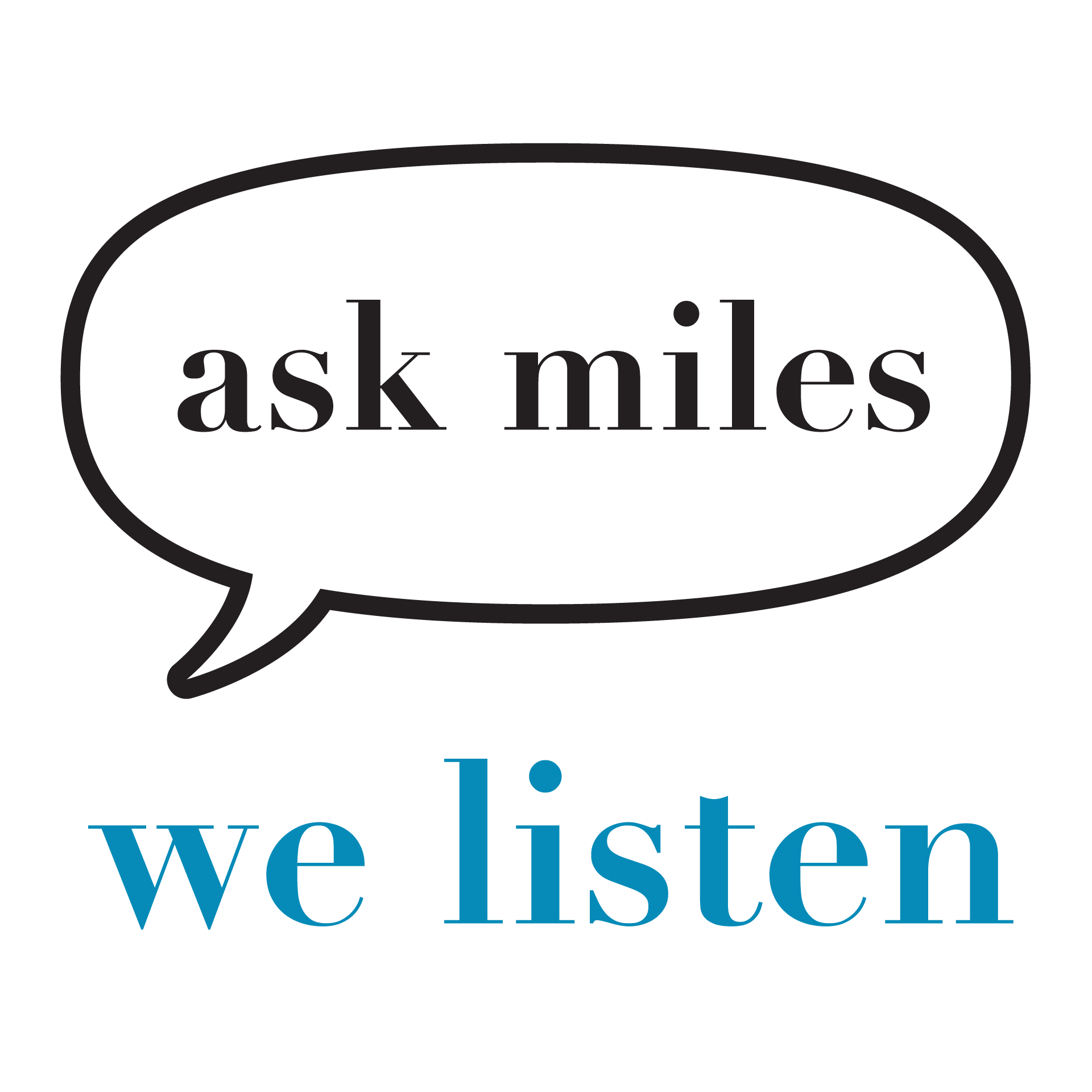
Schedule Your Brand Assessment with Our Experts Now to
